Nonhuman primate mothers do not weep in response to death of their infants. When a non-human primate mother has her offspring, she has already invested considerably time as well as physical and metabolic energy to gestation and birth of the infant. Death of an infant, therefore, is detrimental to the mother who already invested in her offspring, as well as the group’s genetic continuity. Whether or not the death of non-human primate mother’s offspring elicits an emotional or affectionate response is more difficult to identify.
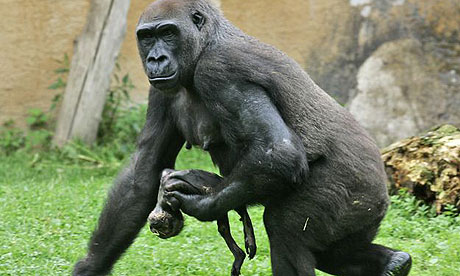
Primatologists have long acknowledged the importance of death of a primate for calculations of demographic trends and constructing life tables (Altman and Altman, 1970). Studies of behavioral responses to death among rhesus macaques include elevated grooming levels between group members, possibly to counteract the loss of a group member. The living also engaged with the deceased by grooming, inspection, as well as aggression towards the corpse (Buhl et al., 2012). Female hamadryas baboons show increase in stress hormone levels after the death of a conspecific (Engh et al., 2006). Studies of chimpanzees group responses to pre- and post-death care of members of their cohort indicate that behaviors typically include close inspection and tests for signs of life at the moment of death, male aggression towards the corpse, all-night attendance by family members, cleaning of the corpse, and even avoidance of the place where death occurred (see Goodall, 1977, Anderson et al., 2010, and Biro et al., 2010).
Whether or not there exists a general trend of maternal responses to primate death remains poorly understood. The mother-offspring bond is considered to be one of the longest and most essential social bonds among mammals (Cronin et al., 2011). The maternal reposes associated with the permanent, premature disruption of this social bond—the death of the offspring—has rarely been investigated (Cronin et al., 2011). Early primatological studies documented male responses to dead infants among semi-free-ranging Barbary macaques (Merz, 1978). A long-term study of wild geladas from Ethiopia recorded 14 cases of dead infants being carried by females was the first attempt to explore responses to death in non-human primates, focusing on allomaternal-like behavior towards dead infant (Fashing et al., 2010). Primate death and behavioral responses from group members have also been documented from several sites, including the Gombe, Tai Forest, and safari park in Scotland (Teleki, 1973; Boesch and Boesch-Achermann, 2000; Anderson, 2011, respectively).
Primatological studies have documented instances when mothers continue to handle the corpses of their infants. Given this prolonged interaction, I wonder, does maternal attachment continues after the death of her offspring? If so, what triggers this particular behavior?
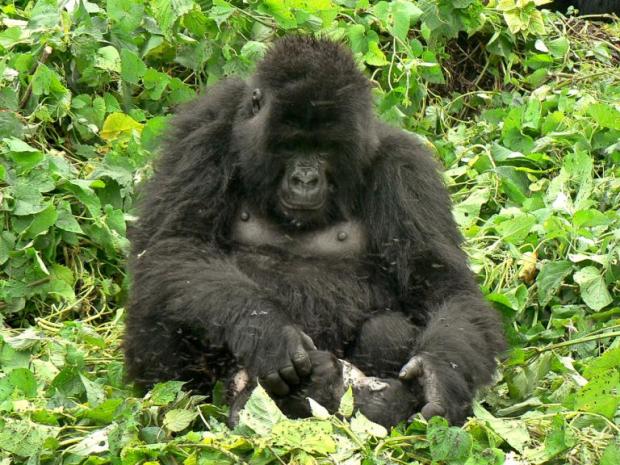
Before I examine the behavioral responses to infant death, it is important to briefly describe what is considered “normal” mother-infant behavior among primate. Mothers and their infants represent a central focus of interest for other females in the group among species and groups of social primates (e.g. Hrdy 1976; Seyfarth 1976; Altmann 1980; Nicolson 1987; Maestripieri 1994a). Females visibly show their interest in interacting with newborn infants. When new infants are present in a group, subadult and nulliparous females approach the mothers and attempt to sniff, investigate, and pick up the young infants (Nicolson 1987). Females also have been observed grooming the mother in exchange for handling her new infant (Altmann, 1980, O’Brien & Robinson, 1991, Muroyama, 1994, Di Bitetti, 1997, Silk, 1999).
While female attraction to infants represents a common feature of primate species, maternal response to infant handling shows a certain degree of variability (Nicolson 1987; Maestripieri 1994b). Maternal responses to infant death have been attributed to several ecological and circumstantial explanations as well as several hypotheses in the primatological literature:
- Unawareness of Death Hypothesis (Hrdy, 1999)
- The Decomposition Hypothesis (Fashing et al., 2011)
- Post-Parturient Condition Hypothesis (Kaplan, 1973; Biro et al., 2010)
- “Learning to Mother” Hypothesis for Learning about Death (Warren and Williamson, 2004
Unawareness of Death Hypothesis
Extended carrying of a dead infant may indicate that the mother is unaware that her infant is no longer alive. According to the hypothesis, primate mothers of recently dead infants continue interacting with her infant exhibiting behaviors typical of new mothers, such as grooming and licking. For example, Kaplan (1972) recorded responses of captive female squirrel monkeys that were presented with the corpses of their dead infants. The infants had been dead for approximately two weeks. The mothers seemed unaware that their infant was no longer living, yet attempted to retrieve the corpse by lifting it or administer vocalizations regardless (Kaplan, 1972). However, these experiments do not simulate a situation that would occur in the squirrel monkeys’ natural environment. The mother’s infant was immediately retrieved after its death, which denied the mothers an opportunity to interact with her infant post-mortem.
Contrary to the hypothesis, there are examples of maternal behavior that shows the mother continues handling her infant while also exhibiting behaviors indicating that she is fully aware that her infant is no longer alive. A white-faced capuchin mother continued to groom and lick the body while trying to repel carnivorous insects from the corpse. She also allowed her dead infant to be fully submerged in water while she drank. Once she finished, she retrieved the corpse, and continued to transport her dead infant for several days (Perry and Manson, 2008). Similarly, chimpanzee mothers from Bossou, Guinea, appear to be aware that the bodies of the infants they carried were inanimate, and adopted carrying techniques not normally used with healthy juveniles (Biro et al., 2010).
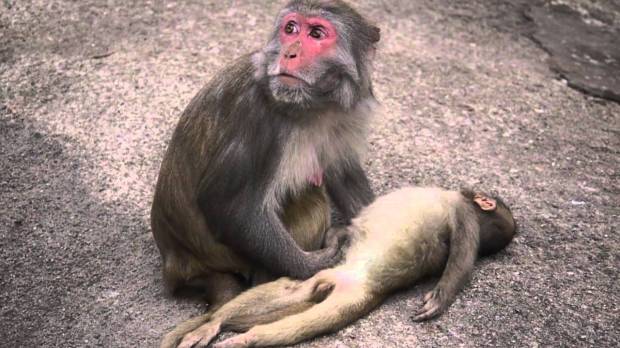
It is possible that uniparious mothers are unable to differentiation between living and non-living offspring due to a lack of experience. Studies have shown, however, that number of living offspring does not necessarily contribute to the duration for which in infant corpse is handled. Two multiparious snub-nosed monkey mothers carried and handled their dead infants for 4 days and one month. The mothers had had infants previously, and therefore could differentiate between normal, responsive infant behavior and abnormal, unresponsive infant behavior (Li et al., 2012). Similarly, multiparious chimpanzees mothers have been documented carrying their infant’s corpses for longer compared to the chimpanzee mothers carrying the corpse of their first and only offspring (Biro et al., 2010). Warren and Williamson (2004) also noted that two multiparious gorilla females also continued to handle their infants long after their death. Whether or not a primate mother is nulliparious or multiparious does not appear to influence how long she continues to interact with the corpse of her infant.
Overall, it appears that the unawareness of death hypothesis does not adequately explain the mechanism of maternal behaviors towards dead offspring. Continued handling of her infant does not necessarily suggest that she is unaware that her infant is not longer living; rather, the mother may be prolonging the separate from her infant for another reason.
The Decomposition Hypothesis
According to the decomposition hypothesis, any long-term carrying of the infant by the mother does not represent a sense of loss or attachment to the infant. Rather, mothers are unaware of the infant’s death and continue to carry the corpse until clear signals of decomposition (e.g. particular odor cues) indicate death (Fashing et al., 2010). Extreme climate conditions (such as cold or hot arid weather) slow the natural rate of decomposition of deceased bodies (Haglund and Sorg, 1997). Prolonged carrying (defined as longer than 10 days) of an infant corpse appears to be more likely in extreme climatic conditions, particularly in cold or hot arid weather, that naturally slows decomposition of infant body (Fashing et al., 2010).
Several studies of primates living in extreme climate conditions have supported the decomposition hypothesis. Gelada monkeys (Theropithecus gelada) of Guassa, Ethiopia, live in an extreme climatic condition that favors a slower rate of decomposition of dead individuals. Over a 3.75 year-long study period, 14 mothers carried and handled their mummified infants for 10 or more days. Extended carrying of dead infants has been documented among mountain gorillas that inhabit unusually cold environments (Fashing et al., 2010b, Nakagawa et al., 2010, Vedder, 1984) and chimpanzees living in extremely arid regions with a long dry season of Bossou, Guinea (Biro et al., 2010, Matsuzawa 1997).
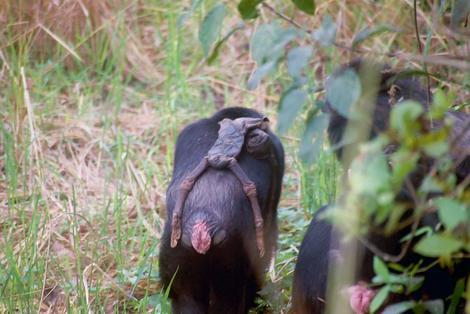
The decomposition hypothesis is based on another assumption that New World primates in tropical environments appear only to carry or care for dead infants rarely or for only a short period of time. For example, a tufted capuchin mother was reported to carry her dead infant for less than 24 hours after an infanticide attack (Izar et al., 2007). This behavior, however, may be due to the social dynamics of infanticide, rather than the maternal indifference towards her dead infant.
Despite the climatic circumstances that delay decomposition, primates have been documented to carry infants for a long enough period that the body does eventually decay. In this case, signs of decomposition, such as putrefaction and change in the infant’s appearance (e.g. loss of fur and limbs) do not repel mother and, in some cases, other kin and non-kin. For example, Bossou chimpanzee mothers as well as related and unrelated individuals from all age groups of both sexes attempted to handle, lift and drop limbs, and sniff the bodies of three dead infants. Juvenile and infants were even allowed to carry the bodies of infants some distance from the mother in bouts of play. Biro and colleagues (2010) state that they never observed a response that could be interpreted as aversion, despite the bodies’ intense smell of decay and usual appearance of mummified skin and missing fur.
Similarly, four female mountain gorilla continued to carry their dead offspring even when the corpses lost their hair and heads, and despite the pervasive smell of decaying flesh (Warren and Williamson, 2004). Observations made by Rumbaugh (1965) of captive squirrel monkeys in San Diego, California, noted that a mother continued to handle her infant for six weeks as the corpse began to putrefy. Over a 24-year study period of Japanese macaques, a total of 157 mothers continued to carry their dead infants between 1 to 17 days despite the quick progression of the decomposition, and the putrid smell and swarm of flies surrounding the dead infant and the mother (Sugiyama et al., 2009). In this case, however, non-kin avoided the mother and her dead infant, seemingly due to the smell, and she received less social grooming that before their infants had died (Sugiyame et al., 2009). Sugiyama and colleagues (2009) state that they cannot determine why mothers continue to carry the corpses given its bad state of decomposition. It is apparent, however, that mothers do not necessarily abandon their offspring due to aversion.
It is possible that “caretaking” behaviors rather than the environmental setting facilitates mummification. In the study conducted by Biro and colleagues (2010) in Bossou, Guinea, three chimpanzee mothers continued to carry the mummified corpses of their infants for 19, 27, and 68 days following their death, exhibiting extensive care of the body by grooming it regularly, sharing her day and night nests with it, and showing distress whenever they became separated. The mothers also chased away flies that circled the corpses, twice with the aid of a tool (Biro et al., 2010).
In sum, the decomposition hypothesis has several flaws. Infant handling is not limited to primates living in unusually arid, cold regions. In fact, mothers continue to handle their dead infants even though the corpses admit olfactory and visual signs of putrefaction and decomposition. Overall, it seems that the foul odor of decomposing flesh does not appear to deter mothers from transporting and manipulating corpses. Oftentimes, this “care-taking” behavior seems to (unintentionally?) preserve the offspring. Yet, this treatment towards dead infants will be explored in the post-parturient condition hypothesis.
Post-Parturient Condition Hypothesis
Post-parturient condition hypothesis proposes that postpartum hormones influence maternal behaviors toward dead infants. Physical characteristics and particular hormones are essential for the onset and maintenance of infant-carrying behavior and the development of the mother–infant bond towards living infants (Kaplan 1973; Biro et al. 2010). Neuroendocrine mechanisms and physical characteristics of the infant (such as natal attractiveness) stimulate and regulate motherly behavior to care for and protect her offspring (see Maestripieri, 2001, 1991). At birth, an infant’s attractiveness includes size at birth, vocalizations made by the infant (e.g. “purring” noises), infantile facial expressions, distinguishing morphological features such as bug ears or tail tufts, and distinctive coat color (Hrdy, 1976).
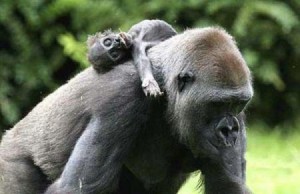
Human, non-human primate, and non-primate mammal studies demonstrate that there are endocrine influences on mother-infant interactions and the formation of bond post-partum (Maestripieri, 1999). In non-primate mammals, pregnancy and lactation hormones enhance maternal responsiveness and behavior although they are not strictly necessary for their onset or maintenance (Stern, 1989). In New World monkeys such as red-bellied tamarins (Saguinus labiatus) and common marmosets (Callithrix jacchus), there is evidence that hormones influence both responsiveness to young during pregnancy and quality of maternal care during lactation (Pryce et al., 1993). Studies of group-living pigtail macaque females show that the females increased their rate of interaction with infants during the final weeks of pregnancy that corresponded with an increase in plasma levels of estradiol and progesterone (Maestripieri and Wallen, 1995; Maestripieri and Zehr, 1998). Fleming and colleagues (1997) showed that human mothers who maintained high levels of estradiol over the parturitional period also had higher feelings of attachment to their own infant in the early postpartum days than mothers whose estradiol levels dropped. Thus, these studies indicate that primate and human parenting is partially influenced by physiological variables.
The continued interaction and gradual separation between the mother and infants’ bodies appears to also be a by-product of hormonal condition of pregnancy and the formation of the mother-infant bond in post-parturient female primates. Behavioral studies note that mothers do not simply abandon the corpse of her dead infant. Rather, the mother continues to interact with the corpse, gradually separate herself physically from the body of her dead offspring.
There are several physiological characteristics that may be observed in female primates that indicate that hormone levels are fluctuating and therefore influencing her behavior. Postpartum amenorrhea in chimpanzees lasts around four years, but is shortened with the death of an infant (Wallis, 1997). The infant could no longer breastfeed and lactation ceased, triggering the mothers’ reproductive cycle to return.
To date, there are no studies that directly link changes in hormones during the mother’s transition from handling her infant until the moment she abandons its. Therefore, the post-parturient condition hypothesis relies on behavioral studies. Several behavioral studies report that mothers gradually separate herself from the corpse of her infant. For example, gelada monkey mothers also experience a graduate separation that includes a transition from only the mother handling the infant corpse, and then allowing other group members to handle to deceased juvenile (Fashing et al., 2010).
The post-parturient condition is best illustrated by observations conducted at Chimfunshi Wildlife Orphanage Trust, a chimpanzee sanctuary in Northwest Zambia (Cronin et al., 2010). Shortly after the death of her infant, the mother transitioned from maintaining close, constant proximity to the dead body to creating physical distance from the deceased infant (Cronin et al., 2010). She maintained visual contact with the body when not in immediate proximity to it. As time passes, mothers transition to lessening her contact with the body and allowing others to inspect the body (Biro et al., 2010; Hosaka et al., 2000). Other studies have also reported that chimpanzee mothers gradually transition from extreme attachment to the body of their dead infants immediately following death to weakened attachment to the body as time passes (Hosaka et al., 2000, Biro et al., 2010).
Ring-talked lemur (Lemu catta) mothers have been reported to continue to return to their dead infants several times for several hours after the infant’s death. Every time each female returned to the body, she would sniff, lick, and touch the infant (Nakamichi et al., 1996). Despite the increasing distance between the troop and the deceased infant, the mothers continued to return to her dead infant, even when the troop have moved 400 meters away from the corpse (Nakamichi et al., 1996). Six of the seven mothers attempted to lift the corpses, and one mother clumsily carried the corpse 15 meters and attempted to jump into a tree. Mothers were unable to maintain proximity between both the troop and the corpse concurrently because she was not able to carry her dead offspring (Nakamichi et al., 1996).
The post-parturient hypothesis appears to most adequately examine the mechanism of maternal handling and carrying of deceased infant remains. Carrying and handling a corpse after death expresses a strong attachment, and the gradual separation of mother from her dead infant are behavioral responses to hormonal changes. Whether or not death of an infant elicits a psychological or emotion response is difficult, possibly impossible to identify. To compliment the hormonal-centric tenants of the post-parturient hypothesis, I will explore literature that contemplates whether or not the prolonged carrying and handling of corpses is part of process in which primates “learn” about death.
“Learning to Mother” Hypothesis for Learning about Death
Studies of maternal responses to death among apes provide additional information investigating whether or not the extended interaction with infant corpses is a period during which primates engage in a learning process. The “learning to mother” hypothesis was first proposed by Hrdy (1976) to explain why female young and non-mothers interact so frequently with offspring. Warren and Williamson (2004) adapt this hypothesis to a population of mountain gorillas to illustrate that the prolonged handling of dead infants is a type of social learning for mothers, young, and non-mothers to acquaint themselves with cues typical of death.

Primatologists have investigated the long-term benefits of young and non-mothers carrying living infants. The handling of live infants by non- mothers has been referred to as aunting, baby-sitting, kidnapping, play-mothering, allomaternal behavior, or allomothering (Hrdy, 1976; Maestripieri, 1994a, 1994b). According to the ‘‘learning to mother’’ hypothesis, young or nulliparous females who handle infants gain maternal experience, and recalling these skills later in life, making them more capable of raising their own offspring (Hrdy, 1976).
The benefits of “learning to mother,” could be gained with a corpse, since the motor skills required to carry an infant while traveling and foraging could still be acquired (Warren and Williamson, 2004). Furthermore, the extending carrying behavior by the mothers, as well as related and unrelated individuals, may be an example of observational learning that promotes prolonged transport of deceased young (Biro et al., 2010). These interactions with a corpse could be part of a process in which the primate learns to recognize death.
Observations of mountain gorillas at Karisoke Research Center, Rwanda, noted that two nullparious mothers in their final months of pregnancy, and two mothers who had recently lost offspring all handled and transported the mothers’ two dead infants (Warren and Williamson, 2004). As previously discussed, the hormonal disposition of the mother may contribute to the continued handle of her infant after death. The hormonal state of pregnant females similarly predisposes her to interact more frequently with infants, even ones that are recently dead. It seems it may be both an innate change in her physiology as well as an opportunity to practice handling infants.
Similarly, Cronin and colleagues (2010) suggest that chimpanzees handle and examine the body of deceased infants in order to recognize cues of a corpse and therefore “learn” about death. Studies conducted at Chimfunshi Wildlife Orphanage Trust, a chimpanzee sanctuary in Northwest Zambia, recorded that one chimpanzee mother touched the body and face of her dead infant, presumably an action that would have provided olfactory and gustatory information about the infant’s condition (Cronin et al., 2010). Every time she returned to the infant’s corpse, she would closely inspected its face and neck. Cronin and colleagues (2010) suggest that close inspection of the face could serve as the best location to assess the condition of the infant. No changes in eye gaze, breathing, or facial musculature could inform the mother that the infant’s condition had irreversible changed (Cronin et al., 2010). The mother was actively gathering novel sensory information about the dead infant, possibly remembering this information for the next time she encountered the same set of cues. In other words, the mother may have been “learning about death.” (Cronin et al., 2010: 420).
Whether or not prolonged handling of infants is indicative of a “cultural” behavior towards death that is passed on throughout the group and through generations may be impossible to prove. Yet, some researchers suggest that the transmission of knowledge for handling of dead infants that occurs throughout multiple generations and occurs among multiple members of a group may indicate that this learning and knowledge may be transferred (see Cronin et al., 2010; Warren and Williamson, 2004; and Biro et al., 2010). For example, three chimpanzee mothers at Bossou, Guinea, all had infants that died during the study period and all exhibited a similar manner of prolonged handling of dead infants. Biro and colleagues (2010) suggest that the similarities in treatments and behaviors may not be a rare occurrence in this particular community. In fact, the prolonged handling may part of the culture of that particular group. In sum, the learning to mother hypothesis provides an intriguing framework in which primatologists may explore prolonged infant handling among the great apes.
Mother-Infant Bonds and Learning to Grieve?
Overall, it appears there is continued attraction and care towards dead infants occurs to some extent in all major taxaonomic groups (Anderson, 2011). Both the decomposition and unawareness of death hypotheses seem insufficient to explain why primate mothers continue to handle the corpses of offspring after death. Contrary to the unawareness of death hypothesis, primate mothers appear to handle their infants in ways that suggest they are aware that their offspring is no longer living. Similarly, primate mothers continue to handle their dead infants regardless of the environmental setting (arid verses humid) and despite putrefaction and decomposition of the corpse.
The post-parturient condition hypothesis, on the other hand, considers both the behavioral and hormonal responses of primate mothers across primate taxa. The formation of the strong mother-infant bond at birth does not simply disappear once the infant dies; rather, it seems that the mother transitions from physiological conditions typical of motherhood (e.g. cessation of lactation amenorrhea) is concurrent with the mother’s gradual separation from and abandonment of her deceased infant.
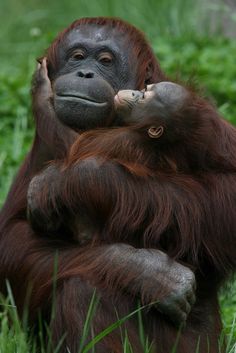
It is particularly interesting that mothers slowly allow conspecifics to handle the corpse, and that recognition of particular cues that signal death may illustrate that young and non-mothers are “learning” to recognize death. Whether or not the handling of dead infants should be considered cultural learning is difficult and potentially impossible to identify. Given that multiple mothers of a particular group of chimpanzees and gorillas all exhibited similar behaviors in response to the death of their infant indicates that the behavior may be contributed to both physiological and social influences.
Studies of primate death are greatly biased towards chimpanzees, but long-term and behavioral studies of gorillas, baboons, and new world monkeys are also becoming more common. Overall, primate behavioral and hormonal studies indicate that continued handling and interaction with infant corpses signifies a connection between the mother and her offspring, even if the offspring has died.
Bibliography
Altmann, J. 1980. Baboon Mothers and Infants. Cambridge, MA: Harvard University Press.
Altmann SA, Altmann J. 1970. Baboon ecology: African field research. Chicago: University of Chicago Press.
Anderson, JR. 2011. A Primatological Perspective on Death. American Journal of Primatology Commentary 73: 410-414.
Biro D, Humle T, Koops K, Sousa C, Hayashi M, Matsuzawa T. 2010. Chimpanzee mothers at Bossou, Guinea carry the mummified remains of their dead infants. Current Biology 20:R351–R352.
Boesch C, Boesch-Achermann H. 2000. The chimpanzees of the Ta ̈ı Forest: behavioural ecology and evolution. Oxford: Oxford University Press.
Buhl, JS, Aure, B, Ruiz-Lambides, A, Gonzales-Martinez, J, Platt, ML, Brent, LJN. 2012. Reponses of Rhesus Macaques (Macaca mulatta) to the Body of a Group Member That Died from a Fatal Attack. International Journal of Primatology 22: 860-871.
Cronin, KA, Van Leeuwen, EJC, Mulgenga, IC, Bodamer, MD. 2010. Behavioral Responses of a Chimpanzee Mother Toward her Death Infant. American Journal of Primatology 73: 415-421.
Di Bitetti, MS. 1997. Evidence for an important social role of allogrooming in a playtrrhine primate. Animal Behaviour 54: 199-211.
Engh, AL, Beehner, JC, Bergman, TJ, Whitten, PL, Hoffmeier, RR, Seyfarth, RM. 2006. Behavioral and hormonal responses to predation in female chacma baboons (Papio hamadryas ursinus). Proceedings of the Royal Society of London B: Biological Sciences 272: 707-712.
Fashing P, Nguyen N, Barry T, Goodale C, Burke R, Jones S, Kerby J, Lee L, Nurmi N, Venkataraman V. 2010a. Death among geladas (Theropithecus gelada): a broader perspective on mummified infants and primate thanatology. American Journal of Primatology 71:1–5.
Fashing P, Nguyen, N, Fashing NJ. 2010b. Behavior of geladas and other endemic wildlife during a desert locust outbreak at Guassa, Ethiopia: ecological and conservation implications. Primates 51: 193-197.
Fleming, AS, Ruble, D, Krieger, H, Wong, PY. 1997. Hormonal and experiential correlates of maternal responsiveness during pregnancy and the puerperium in human mothers. Hormones and Behavior 31: 145-158.
Goodall, 1977. 1977. Killings and Cannibalism in Free-Living Chimpanzees. Folia Primatologica 28: 259-282.
Haglund, WD, Sorg MH, editors. 1997. Forensic taphonomy: the postmortem fate of human remains. Boca Raton: CRC Press.
Hamai, M, Nishida, T., Takasaki, H, Turner, LA. 1992. New Records of Within-group Infanticide and Cannibalism in Wild Chimpanzees. Primates 33(2) 151-162.
Hosaka, K, Matsumoto-Oda, A, Huffman, MA, Kawanaka, K. 2000. Reactions to dead bodies of conspecifics by wild chimpanzees in the Mahale Mountains, Tanzania. Primate Research 16: 1-15.
Hrdy, SB. 1999. Mother nature: a history of mothers, infants, and natural selection. Pantheon Books, New York.
Hrdy, SB. 1976. Care and exploitation of nonhuman primate infants by conspecifics other than the mother. In: Advances in the study of behavior vol 6. (Ed. by Rosenblatt JS, Hinde RA, E S, Bier C) New York: Academic Press. 101–158
Izar, P. Ramos da Silva, ED, De Resende, BD. Ottoni, EB. 2007. A case of infanticide in tufted capuchin monkeys (Cebus nigritus). Mastozoologîa neotropical 14(1) 73-76.
Kaplan, J. 1973. Responses of mother squirrel monkeys to death infants. Primates 14: 89-91.
Li, T, Ren, B, Li, D, Shang, Y, Li, M. 2012. Maternal responses to dead infants in Yunnan snub-nosed monkey (Rhinopithecus bieti) in the Baimaxueschan Nature Reserve, Yunnan, China. Primates 52: 127-132.
Maestripieri, D. 2001. Is There Mother-Infant Bonding in Primates? Developmental Review 21: 93-120.
Maestripieri, D. 1999. The biological of human parenting: insights from nonhuman primates. Neruoscience and Biobehavioral Review 23: 411-422.
Maestripieri, D. 1994a. Mother-infant relationships in three species of macaques (Macaca mulatta, M. nemestrina, M. arctodies). I. Development of the mother-infant relationship in the first three months. Behaviour 131: 75-96.
Maestripieri, D. 1994b. Social structure, infant handling, and mothering styles in group-living Old World monkeys. International Journal of Primatology 15: 531-553.
Maestripieri, D, Wallen, K. 1995. Interest in infants varies with reproductive condition in group-living female pigtail macaques (Macaca nemestrina). Physiological Behavior 57: 353-358.
Maestripieri, D, Zehr, JL. 1998. Maternal responsiveness increases during pregnancy and after estrogen treatment in macaques. Hormones and Behavior 34(3): 223-230.
Matsuzawa, T. 1997. The death of an infant chimpanzee at Bossou, Guinea. Pan African News 4:1.
Merz, E. 1978. Male-male interactions with dead infants in Macaca sylvanus. Primates 19: 749-754.
Muroyama, Y. 1994. Exchange of grooming for allomothering in female patas monkeys. Behaviour 128: 103-119.
Nakagawa N, Nakamichi M, Sugiura, H, editors. 2010. The Japanese macaques. New York: Springer.
Nakamichi M, Koyama N, Jolly A. 1996. Maternal responses to dead and dying infants in wild troops of ring-tailed lemurs at the Berenty Reserve, Madagascar. International Journal of Primatology 17:505–523.
Nicolson, NA. 1987. Infants, mothers, and other females. In: Primate Societies (Ed. by B. Smuts, D. Cheney, R. Seyfarth, R. Wrangham & T. Struhsaker) 330-342. Chicago: Chicago University Press.
O’Brien, TG and Robinson, JC. 1991. Allomaternal care by female wedge-capped capuchin monkeys: effects of age, rank and relatedness. Behaviour 119: 30-50.
Perry S, Manson JH. 2008. Manipulative monkeys: the capuchins of Lomas Barbudal. Cambridge, MA: Harvard University Press.
Pryce, CR, Dobeli, M, Martin, RD, 1993. Effects of sex steroids on maternal motivation in the common marmoset (Callithrix jacchus), development and application of an operant system with maternal reinforcement. Journal of Comparative Psychology 107: 99-115.
Rosenson, LM. 1977. The response of some prosimian primate mothers to their own anesthetized infants. Primates 18: 579-588
Rumbaugh DM. 1965. Maternal care in relation to infant behavior in the squirrel monkey. Psychological Reports 16: 171–176.
Scheper-Hughes, N. 1992. Death Without Weeping: The Violence of Everyday Life in Brazil. Berkeley, CA: University of California Press.
Scheper-Hughes, N. 1984. Infant mortality and infant care: Cultural and economic constraints on nurturing in Northeast Brazil. Social Science & Medicine 19(5): 535-546.
Seyfarth, RM. 1976. Social relationships among adult female baboons. Animal Behavior 24: 917–938
Silk, JB. 1999. Why are infants so attractive to others? The form and function of infant handling in bonnet macaques. Animal Behaviour 57: 1021-1032.
Stern, J. 1989. Maternal Behavior: Sensory, Hormonal, and Neural Determinants. In: Psychoendocrinology (Ed. by FR Brush, S Levine) 105-225 San Diego, CA: Academic Press.
Sugiyama, Y, Kurita, H, Matsui, T, Kimoto, S, Shimomura, T. 2009. Carrying of dead infants by Japanese macaques (Macaca fuscata) mothers. Anthropological Science 117: 113-119.
Teleki G. 1973. Group responses to the accidental death of a chimpanzee in Gombe National Park, Tanzania. Folia Primatologica 20:81–94.
Vedder, A. 1984. Movements patterns of a group of free-ranging mountain gorillas (Gorilla gorilla beringei) and their relation to food availability. American Journal of Primatology 7: 73-88.
Wallis, J. 1997. A survey of reproductive parameters in the free-ranging chimpanzees of Gombe National Park. J. Reprod. Fertil. 109: 297–307.
Warren Y, Williamson EA. 2004. Transport of dead infant mountain gorillas by mothers and unrelated females. Zoo Biology 23:375–378.